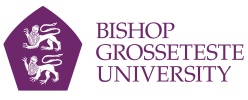More Human Than Human? Transformational habitus, capital, field and the implanting of memories in school curricula
Wood, P. and Quickfall, A. (2021) More Human Than Human? Transformational habitus, capital, field and the implanting of memories in school curricula. In: Pop Culture and Curriculum, Assemble!: Exploring the Limits of Curricular Humanism Through Pop Culture. DIO Press, Lewes, pp. 237-256. ISBN 9781645041832
|
Text
More Human Than Human submission ver 2 - PW AQ.docx Restricted to Repository staff only Download (47kB) |
Abstract
Blade Runner, Ridley Scott’s 1982 dystopian imagining of the Earth has, at its centre, the tension of what it means to be human and the concept of identity. Where previous and contemporaneous imaginings of the future had clear delineations between humans and ‘other’, be they species from other planets, such as the alien lifeform in The Thing (1982), or the development of artificial consciousness, such as Skynet in The Terminator (1984), there was always a clear boundary. But in Blade Runner that delineation disappears. Replicants, unlike other inventions of humans, are organic, self-directed tools (Norris, 2013). The crux of this self-direction is consciousness, the memories which come with it, and ultimately the identities and place in society that this affords. Indeed, Blade Runner has memory as a central theme, what it is, what it means and how it gives us our identity. These issues are reflected in the focused shot of an eye at the very start of the film, perhaps prompting us to consider the ‘windows of the soul’ metaphor. By giving replicants memories, they are given the notion of a past, to give them a coherent view of how they fit within society. The notion of ‘planted memories’ within Blade Runner reflects the social theory of Bourdieu. Is it memories, the resultant identity and by association learning which indicate our habitus and cultural capital? Are the memories of the replicants meant to aid them in identity formation and taking their designated roles in society? Do implanted memories prevent replicants rejecting their roles in society? Does having the correct experiences, memories and learning foster a given cultural capital, aiding replicants to flourish and foster a habitus which allows them to successfully navigate fields as humans rather than as a lower form of consciousness. We reflect on the ways in which these issues relate to the implementation of the current government National Curriculum (2013) in England. It is a curriculum designed to create experiences and memories within young people to foster particular cultural capital and identity formation, to accept a given view of the world; to ‘introduce pupils to the best that has been thought and said, an appreciation of human creativity and achievement’ (DfE, 2013). It can be argued that this has a particularly important role in ensuring that working-class children do not reject their programming by ensuring they accept that certain fields and habitus have value, and to prepare them well for their designated positions in society. As Reay notes, on consideration of the curriculum and associated inspection requirements for schools, ’The key elements of cultural capital are entwined with privileged lifestyles rather than qualities you can separate off and then teach the poor and working classes’ (Reay, 2019, para. 11).
| Item Type: | Book Section |
|---|---|
| Additional Information: | © 2021 DIO. This is an author accepted manuscript of a paper subsequently published in Pop Culture and Curriculum, Assemble!: Exploring the Limits of Curricular Humanism Through Pop Culture. Uploaded in accordance with the publisher's self-archiving policy. |
| Divisions: | Research and Innovation Centre |
| Depositing User: | Aimee Quickfall |
| Date Deposited: | 24 Jan 2022 11:08 |
| Last Modified: | 24 Jan 2022 11:08 |
| URI: | https://bgro.repository.guildhe.ac.uk/id/eprint/923 |
Actions (login required)
 |
Edit Item |

